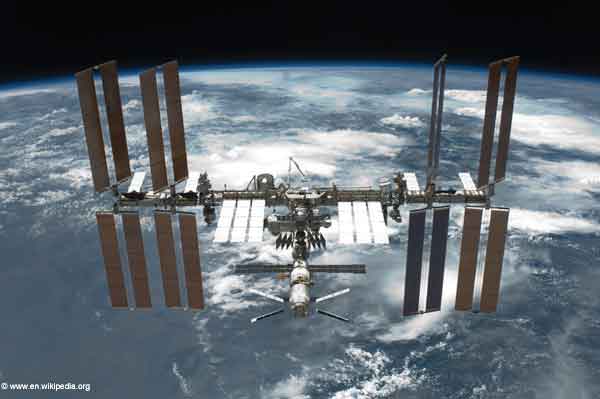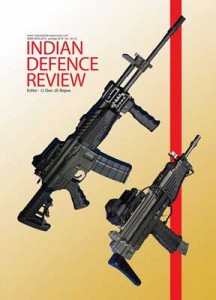Qualitatively speaking, the Mars mission was a big boost to the Indian space aspirations as it changed the perception of the global space-faring community towards India. ICE, the cryogenic engine used in the launch vehicle has been developed totally indigenously and India is proud to be one of the few countries with the technology. However, India still lags behind in the capacity of its launch vehicles.
The European Union has proposed an International Code of Conduct for Outer Space Activities…
According to Dr Radhakrishnan, Chairman, ISRO, “China has launch vehicles with 5.5 tonnes capacity, Europe has an 11-tonne capacity launch vehicle, US has 13 tonne capacity launch vehicles and Russia has nearly ten tonne capacity vehicles.” He reiterates that India’s long-term target is to make a launch vehicle with a 12-tonne capacity. This number-brandishing is reminiscent of the Cold War era when the Super Powers, followed by others, embarked on a race to amass nuclear capability. Despite the carrying capacity of launch vehicles currently being discussed only in terms of how big a satellite or craft it can carry into outer space or through interplanetary voids, the very fact that space vehicles have a military potential, renders them akin to nuclear weapons. There is also the issue of satellites being subject to peaceful as well as military exploitation.
Space Deterrence
According to Karl Mueller, “Nuclear deterrence and space deterrence aren’t really parallel concepts. Indeed, it is not entirely clear that space deterrence is a very useful construct – we do not speak of air or naval deterrence as distinct categories, after all, because of the degree to which conventional warfare in different domains is usually intermingled. Military space activities, too, are intimately connected to operations and capabilities in the other domains.” The similarities and dissimilarities between nuclear and space deterrence notwithstanding, it is not hard to visualise the effects of militarisation of space on the manner in which space capability is becoming an instrument of national power. Self-evidently, space deterrence is directed at satellites and other space-based systems. In addition, it also consists of space capabilities for accomplishing the ends of deterrence.
Since December 1967, the Treaty on Principles Governing the Activities of States in the Exploration and Use of Outer Space including the Moon and Other Celestial Bodies, has been in place with over 100 countries having ratified the treaty and more than two dozen others having signed but not yet ratified the agreement. Declaring celestial objects to be “the common heritage of mankind”, it bans only the deployment of weapons of mass destruction in outer space. There are several initiatives to prevent the militarisation of space.
The commercial potential of our space capability cannot be ignored…
The European Union has proposed an International Code of Conduct for Outer Space Activities. The Treaty on Prevention of the Placement of Weapons in Outer Space and of the Threat or Use of Force against Outer Space Objects was first proposed by China and Russia in February 2008 as an international legally binding treaty that would outlaw the weaponisation of space. After several draft amendments since then, on October 30, 2014, at the 69th session of the UN General Assembly, the First Committee (Disarmament and International Security), approving the text by a recorded vote of 126 in favour to 4 against (Israel, Ukraine, United States, Georgia), with 46 abstentions, asked the Assembly to urge an early start to substantive work on the updated draft treaty. Japan that backed the EU code is, “committed to comprehensively examining and discussing various issues related to the Prevention of Arms Race in Outer Space,” and has called for careful examination of i.e., is opposed to the draft Treaty on the Prevention of the Placement of Weapons in Outer Space. Future years will show what texture and acceptability the final treaty achieves.
In this context, the possession of satellites and space stations by the big nations assumes as much importance as Anti Satellite (ASAT) capabilities. ASAT development started in the 1950s with US and USSR pioneering it. Initially, the main focus was on ground-based missiles but since then, many innovative projects have emerged. In November 2014, space agencies and amateur satellite watchers christened a mysterious Russian satellite as Object 2014-28E. The object was launched in May 2014 but no announcement preceded its launch leading to the air of ambiguity around it. Naturally, its sighting has rejuvenated fears about space-based ASATs, a capability so far demonstrated by US, Russia and China ostensibly for the purpose of destroying satellites that posed the danger of falling uncontrollably to the Earth’s surface.
Commercial Use of Space
As an adjunct to the peaceful and military uses of space, we can add commercial spacecraft, recently in the news for wrong reasons. On October 28, an Antares rocket built by Orbital Sciences Corporation crashed onto its launch pad followed by a Virgin Galactic spaceship breaking up on engine start up a couple of days later. Both were commercial ventures. While the first was carrying two tonnes of cargo to the International Space Station (ISS), the latter was a test flight of a space plane aimed at carrying space passengers commercially at a whopping $2,50,000 per head. It is worth a mention here that the commercial potential of our space capability cannot be ignored.
Of all the space-faring nations, China occupies the most prominent place in India’s psyche…
India-China Rivalry
Of all the space-faring nations, China occupies the most prominent place in India’s psyche. Its economic might, its exertions to surround India strategically, its inroads into the politico-strategic consciousness of our neighbours and its furtive transgressions into our border territorial space, all supplement each other into an uneasy absence of hostilities. India’s stealing a march in space by its Mars initiative would definitely be viewed by China with rancour.
China’s performance in space is laudable. It has successfully recovered an experimental spacecraft that flew around the Moon. India’s announcement of a plan to do so in December came a few hours before the Chinese craft landed back on Earth on November 01 and is planning to send a spacecraft to the Moon in 2017 which will return to Earth after collecting soil samples. Only the United States and Russia have been able to perform this feat so far. China’s lunar exploration programme has already launched a pair of orbiting lunar probes and last year, landed a craft on the Moon with a rover onboard. China has also hinted at a possible manned mission to the Moon at a future date if officials decide to combine the human spaceflight and lunar exploration programmes.
Officially, China is insistent that its space programme is for peaceful purposes but the US Defence Department has highlighted China’s increasing space capabilities and said Beijing is pursuing a variety of activities aimed at preventing its adversaries from using space-based assets during a crisis. Russia has likewise been disturbed by the tenor and texture of China’s space programme. According to Konstantin Sivkov, Deputy Head of the Moscow-based think-tank, Academy of Geopolitical Problems, “China has conducted two anti-satellite tests very recently, using its advanced laser technology. This was done during a recent exercise of the People’s Liberation Army. The anti-satellite exercises were conducted using laser weapons”.
Another significant bit of news is that, at the Zuhai Air Show, the model of a small satellite platform was unveiled. A company representative of China Aerospace Science & Industry Corporation (CASIC) is reported to have stated that a truck mobile small satellite launcher has been tested twice.
Several initiatives aimed at preventing arms in outer space are currently being exercised by the global comity of nations….
All the above developments in China need to be seen in the context of a report in Xinhua according to which, in June 2014, President Xi Jinping, who is also Chairman of the PLA Central Military Commission (CMC), told People’s Liberation Army Air Force (PLAAF) to upgrade and accelerate its integration with the country’s space programme to keep up with what was the main goal of advanced air forces around the world. Earlier, in April, the Centre for National Defence Policy, a part of the PLA’s Academy of Military Sciences, had released a report in April which said that in the last 15 or so years, security threats from space had increased in China. There is no word yet from China on how far along its air force is in its space military programme but in September, Japan’s Yomiuri Shimbun reported that the PLA had established an aerospace force. The branch, which is expected to focus on military operations in space, would be the army’s fifth branch after the PLA’s ground, air, naval and strategic missile force. The new force would be complemented by an aerospace office under the CMC, it added. But the PLA has not confirmed the report.
Conclusion
Several initiatives aimed at preventing arms in outer space are currently being exercised by the global comity of nations. However, if the nuclear imbroglio of the past is to be heeded, a similar race in space appears to be possible, if not inevitable. The immense advantage of air power in military conflict is unarguable. The distension of aerial warfare into aerospace warfare has already happened and the use of space-based communications, weapon systems and surveillance platforms is a reality. Moreover, space technologies provide means to advance a nation’s scientific, social and economic interests thereby contributing to national growth and national power.
On November 12, the US satellite weather network was reported to have suffered an electronic attack, forcing cyber-security teams to “seal-off data vital to disaster planning, aviation, shipping and scores of other crucial uses” and leading to a disruption of US National Oceanic and Atmospheric Administration (NOAA)’s data feed for weather forecasts. Although the attack had a small impact on weather forecasts, it highlighted a vulnerability in satellite systems that reaches far beyond the meteorological community.
As in the case of the US, for India too, satellite data and its associated connectivity touch every aspect of daily life. As India’s space programme blooms in keeping with ISRO’s Space Vision 2025, its contribution to the national economy will grow from its already impressive levels. The continued wellbeing of India’s space assets including ground stations as well as space-based assets, assumes grave importance in this light. There is also the concern for continued ability to exploit space for non-military purposes. Perhaps it is time to focus on the vulnerabilities of our space assets and the conceivable threats that they may face in the future. A deliberate approach to this aspect would then help strengthen a national space security policy.
Of all the space-faring nations, China occupies the most prominent place in India’s psyche…






